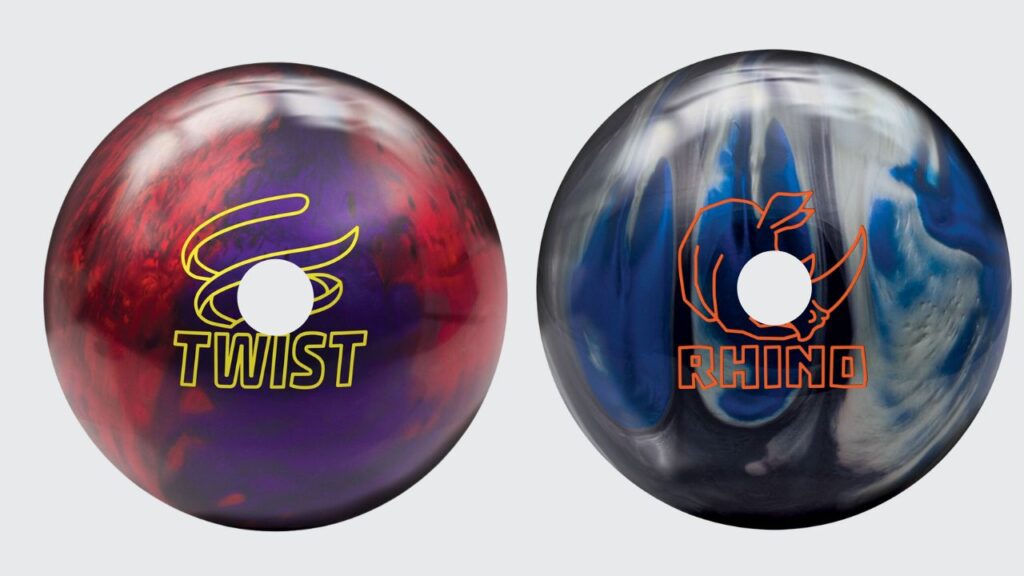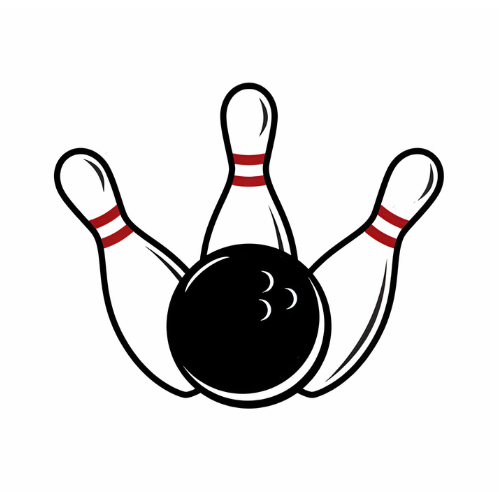The rhino and twist bowling ball are two popular options for bowlers looking for performance and versatility. We will compare the features and benefits of both balls to help you make an informed decision.
The rhino offers a strong hook potential and a controlled backend reaction, making it suitable for different lane conditions. On the other hand, the twist bowling ball provides excellent length on dry lanes and a predictable hook. Whether you prefer power or precision, understanding the differences between these two balls will allow you to choose the one that best suits your bowling style.
So, let’s delve deeper into the specifications and characteristics of the rhino and twist bowling ball to help you find the perfect match for your game.

The Evolution Of Bowling Balls
Bowling balls have come a long way, evolving over the years to meet the needs of bowlers. From the classic rhino to the modern twist, there have been various types of bowling balls designed. These balls are engineered to provide different levels of hook potential, allowing bowlers to adjust their game strategies.
The rhino, known for its durability and straight-line motion, is favored by beginners. On the other hand, the twist offers enhanced hook potential, providing more angular motion upon contact with the pins. With advancements in technology, bowling balls have become more versatile and adaptable, catering to the diverse needs and preferences of bowlers.
As the game continues to evolve, we can expect to see even more innovative designs in the world of bowling balls.
The Rhino Bowling Ball
The rhino bowling ball is a popular choice for bowlers of all skill levels. Its key features include a high-quality reactive resin coverstock that provides excellent hook potential and strong backend reaction. The core design offers a controllable motion, allowing for consistent pin carry and improved accuracy.
Whether you’re bowling on dry or oily lane conditions, the rhino ball delivers reliable performance. Its versatility makes it suitable for both beginners looking to develop their skills and experienced bowlers seeking a reliable go-to ball. The rhino’s durable construction ensures long-lasting performance, making it a worthwhile investment for any bowler.
With its impressive balance of power and control, the rhino bowling ball is a trusted companion on the lanes, capable of delivering satisfying results.
The Twist Bowling Ball
The twist bowling ball is an impressive choice for bowlers of all skill levels. With its unique design and advanced technology, this ball offers a high level of performance on various lane conditions. Its key features include a dynamic core that provides exceptional power and accuracy, allowing for precise shots and increased pin carry.
The twist also boasts a reactive coverstock that creates optimal friction with the lane, resulting in enhanced hook potential and improved control. Whether you’re playing on dry lanes or heavier oil patterns, this bowling ball ensures consistent performance and delivers outstanding results.
Its versatility and reliability make it a top choice among bowlers looking to take their game to the next level. Experience the precision and power of the twist bowling ball today.
Rhino Vs Twist: Ball Construction And Design
Bowling balls differ in their construction and design, including the materials used. Rhino balls are typically made with a reactive resin coverstock, providing optimal grip on the lane. This coverstock is known for its durability, making the rhino ball a great choice for bowlers who want a ball that will last.
On the other hand, twist balls feature a polyester coverstock, which offers a more predictable and controlled roll. The polyester coverstock is less aggressive than reactive resin, making twist balls ideal for beginners or bowlers who prefer a straighter shot.
The construction and materials of these balls directly impact their performance on the lanes, allowing bowlers to choose the one that best suits their style and skill level. Consider your bowling technique and lane conditions when deciding between the rhino and twist bowling balls.
Rhino Vs Twist: Ball Core Technology
Core technology plays a significant role in determining the ball motion and hook potential of rhino and twist bowling balls. The rhino ball features an advanced core design that enhances its stability and predictability on the lanes. This core technology enables the rhino to provide a consistent roll and improved control, making it a great choice for both beginners and experienced bowlers.
On the other hand, the twist ball incorporates a different core technology that promotes easier length through the front part of the lane and a stronger backend reaction. This core design allows the twist to provide more angularity and increased hook potential, making it a popular choice among bowlers who prefer a more aggressive shot.
Whether you choose rhino or twist, understanding the effects of their respective core technologies can help you make an informed decision and enhance your overall performance on the lanes.
Rhino Vs Twist: Ball Coverstock
Rhino and twist bowling balls differ in their coverstock material and surface texture. These variations have a significant impact on the ball’s motion and hook potential. The coverstock material plays a vital role in determining the ball’s overall performance. It affects the amount of friction the ball generates when it skids on the lane.
The surface texture, on the other hand, influences the level of grip the ball has on the lane. Rhino bowling balls typically feature a solid reactive coverstock, which provides a balanced combination of grip and control. In contrast, twist bowling balls often utilize a pearl reactive coverstock, offering enhanced length and backend reaction.
These differences in coverstock material and surface texture make rhino and twist bowling balls suitable for different lane conditions and player preferences. Whether you’re seeking controlled hook potential or explosive backend motion, understanding the impact of coverstock is crucial in choosing the right bowling ball for your game.
Rhino Vs Twist: Performance And Versatility
Rhino and twist bowling balls offer exceptional performance and versatility on different lane conditions. Both balls excel on dry, medium, and oily lanes, delivering reliable hooks and controlled movements. The rhino provides a strong backend reaction, making it ideal for medium oil patterns.
On the other hand, the twist boasts excellent length and a smooth arc, perfect for dry and light oil conditions. Each ball has its strengths and weaknesses. While the rhino offers more overall hook potential, it may struggle to retain energy on heavier oil patterns.
In contrast, the twist may lack enough hook potential on heavy oil lanes, but it excels in providing control and predictability. Whether you prefer power or finesse, rhino and twist bowling balls are reliable choices for enhancing your performance and versatility on the lanes.
FAQ
What Is The Difference Between The Rhino And Twist Bowling Balls?
The rhino bowling ball is designed for medium oil conditions, while the twist is better suited for light oil conditions.
Which Bowling Ball Is More Suitable For Beginners?
For beginners, the rhino bowling ball is a great choice as it offers a consistent and forgiving reaction on the lanes.
Can The Twist Bowling Ball Be Used By Advanced Bowlers?
Yes, advanced bowlers can use the twist bowling ball as a spare ball or for specific lane conditions where a smooth reaction is preferred.
Conclusion
After comparing the rhino and twist bowling ball, it’s clear that both have their unique features and benefits. The rhino offers exceptional control and predictability, making it a great option for beginners or those looking for a reliable ball for lighter oil conditions.
On the other hand, the twist bowling ball excels in its versatility, providing a smooth and controllable motion on both dry and medium oil patterns. When choosing between the rhino and twist bowling ball, it ultimately comes down to personal preference and playing style.
